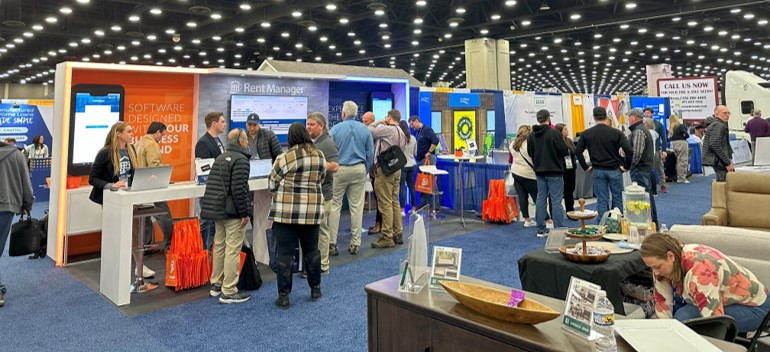Let’s face it—life happens. Scratches, holes, and leaks are just a few of the many things that occur in a living space, and some tenant damage to your property is inevitable. As your residents live their lives, they leave a few marks behind. Not fixing damage when it’s noted, and extreme, long-term damage are where the problems—and money spending—begin. We’ve provided four strategies to help save your property from damage that lasts.
Security deposits and clear lease agreements
Security deposits and lease agreements are a regular part of a property manager’s work life, especially during heavy move-in seasons. These common-yet-essential items are two of the best ways to ensure your residents leave as little damage behind as possible. Providing a concise and detailed lease agreement, as well as a larger security deposit, will help to eliminate any confusion on the tenant’s part.
A security deposit serves more than one purpose. While it’s there to help reimburse the property owner for damages, it’s also a reminder to residents to take extra care of the property so they can keep as much of the security deposit as possible. A substantial security deposit (compared to the price of rent) may convince tenants to take caution when doing anything that could potentially damage the property, while a small (or nonexistent) security deposit may make renters feel less inspired to keep their units in top condition. If a tenant’s finances are on the table, the deposit gives them an incentive to treat the property like they are the ones who own it.
A detailed lease agreement also helps tenants understand what you expect of them during their residency, as well as which damages will lead to deductions from their security deposit. The lease should give specifics on what state you expect the property to be in after they leave. It may even be helpful to state the exact condition of the property upon their arrival, in case any repairs are needed that are not the tenant’s fault. Because a lease agreement is legally binding, you and your tenant both have a duty to uphold what is written. The clearer you are, the more likely you’ll get what you hoped for.
Tenant screening can help prevent damage
Screening tenants is a crucial task for property managers since past tenant behavior can indicate future tenant behavior. Tenant screening helps mitigate risk and ensure the safety of your property. Because tenant screenings often involve references from previous landlords, you’ll be better prepared to predict if they’ll be slow with rent payments, break lease agreements, or cause damage with heavy costs. Choosing tenants based on screening results can help save you time and money in the long run. According to Mashvisor, you should “develop your own screening criteria and stick to them strictly.”
Here are some critical red flags that may come up in tenant screening:
- Previous damage to a rental property
- Prior evictions
- History of late payments or money owed to previous landlords
- Difficult application process
Regular cleaning and inspections
The best way to let a tenant know how you expect them to treat your property is to show them upon move-in. If you show that you care about the property before they were there, they are more likely to maintain the space during their residency. Set a clear standard with your own maintenance and care of the property—showing a potential tenant an unclean unit (or one in need of major repairs) will immediately send the wrong message. Keep your vacant units at the level of excellence you expect from your residents so they can follow in your footsteps.
Some tenants may be living in a rental property for the first time or may not fully understand the level of care required to properly maintain a home. Offering your renters a simple maintenance checklist may help to eliminate any uncertainties. Conducting an orientation at the beginning of your resident’s lease may also minimize misunderstandings.
Be sure to record the condition of the property when the tenant moves in so you have a baseline. Go as far as taking photos or videos and letting the tenant know that you have done so. Having regular check-ins, seasonal inspections, and yearly cleanings (where the tenant can pitch in part of the cost), can help reinforce your expectations as well as prevent any further damage from occurring.
The best way to prevent damage with an attentive tenant is by responding quickly and efficiently to service requests. Promptly fix leaks and check for signs of water damage and mold. Address appliance issues and track your assets so you can identify and replace outdated units when necessary. Repair walls that may have been damaged from wall hangings, moving furniture, or have even received water damage. Dealing with issues quickly will increase resident satisfaction and likely prevent more-severe damage from taking place.
In summary:
- Be vigilant and communicate clearly during move-ins.
- Conduct routine inspections.
- Keep an eye on vacant properties—make sure they are up-to-date as well.
Preventing Tenant Damage Through Strong Relationships
A good landlord-tenant relationship is key in building profitable rentals with long-term residents. If you want your units to be in move-in shape on move-out day, it’s important to maintain a responsive connection with your renters. Address issues early and efficiently so they know they can depend on you to make repairs quickly in the future. Showing respect for their time and requests will help them to return the same favor to you and your expectations for your property.
Although it is the property manager’s job to keep the property in good condition for tenants, it’s also the tenant’s job to ensure any damage from simply living doesn’t get out of hand. Signing lease agreements and being clear and up-front about your expectations from tenants are great ways to help avoid miscommunications. Both parties have a responsibility to keep the property in good condition. This often requires timely communication between the tenant and the property manager. Screen your tenants, have binding agreements, and keep up with regular cleaning and inspections to ensure your property remains intact.
 Register for RMUC.25
Register for RMUC.25





